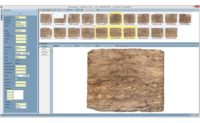Industry veteran Dale Schleppenbach and Jon Schueler, both of Park Industries, presented “Integrating New Equipment into an Existing Fabrication Shop” in an educational session during The International Surface Event, which was held at the Mandalay Bay Convention Center in Las Vegas, NV, from February 1 to 3, 2022. An additional day of education was held on Monday, January 31st.
“You have to keep it relative because things keep changing,” Schleppenbach told an attendee at the start of the presentation. He, along with Schueler, pointed out several critical points to consider when determining when and how to invest in new machinery for a fabrication shop.
- Make sure the operator is on board with the change. Team support is crucial to a smooth transition. Often employees feel anxious and worry that automation will replace their job. Schleppenbach and Schueler said that an owner should explain to their employees about a quality of work life and building a healthier environment. A new machine can assist in reducing the amount of silica dust. It is also important to explain that less manual labor does not mean job loss.
- Added capacity is another important consideration. “It’s hard to stay the same size in a market that is growing,” said Schleppenbach. Profitability has to be examined.
- Evaluate the shop’s current flow. All of the key components that lead to a successful and productive operation should be reviewed. Schleppenbach and Schuelerasked participants where their constraints were. One fabricator cited communication. For an efficient production process, all kinks in the process need to be worked out.
- “Shop layout is always a concern,” said Schleppenbach. “People wonder if they are putting the machine in the right spot?” He went on to say how many fabricators worry about the expense and disruption of reconfiguring machinery. “You have to remember that you will be recouping it with efficiency,” he said.
- Training is another relevant consideration. “Everyone has to ‘buy in’ to it,” said Schueler. “Who is going to get trained?” he asked. The skill set of each employee should be considered. Cross-training workers is also a good idea.







